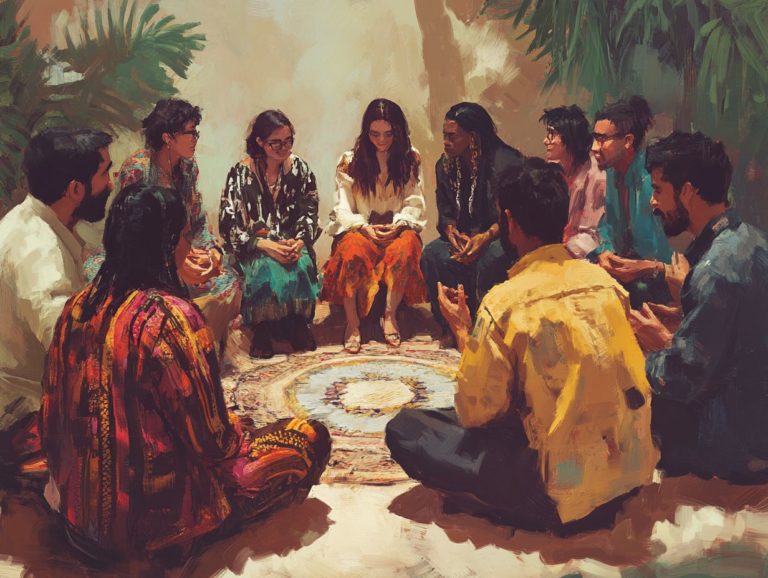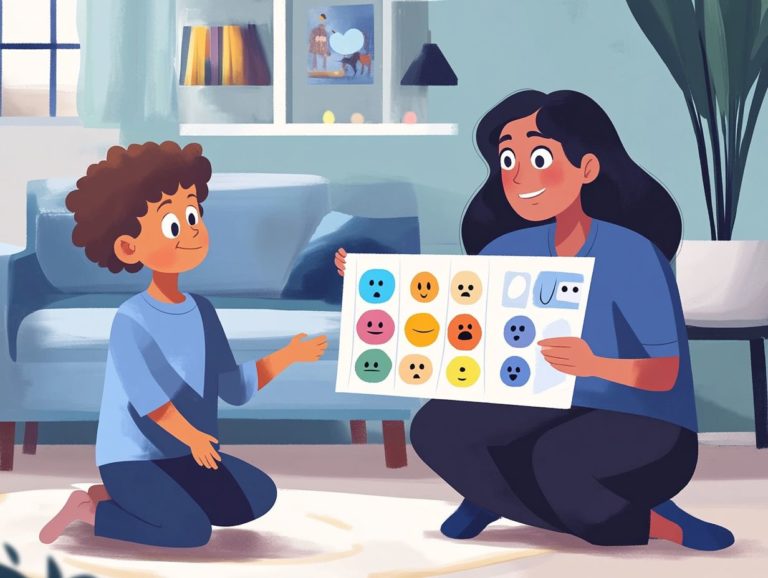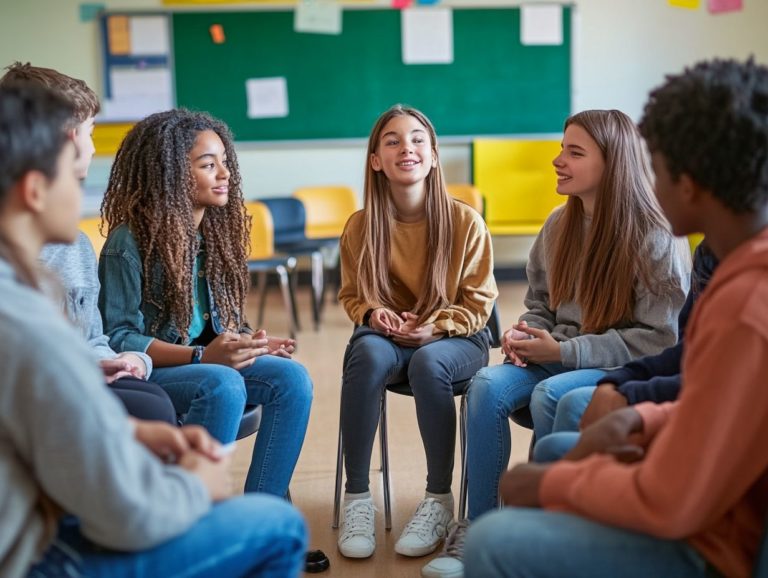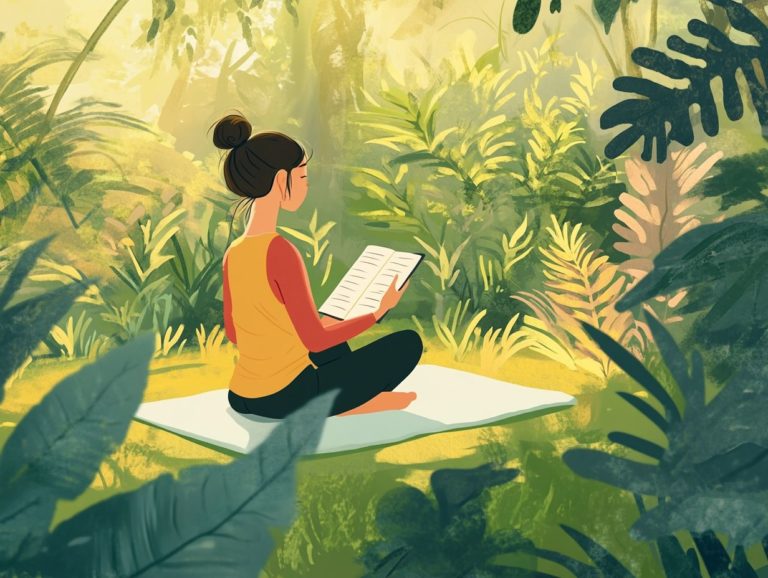Using Art to Promote Emotional Awareness
Contents
- The Transformative Power of Art
- The Power of Art in Promoting Emotional Awareness
- What is Emotional Awareness?
- The Role of Art in Promoting Emotional Awareness
- Ways to Use Art for Emotional Awareness
- How Art Therapy Can Help with Emotional Awareness and Mental Health
- Enhancing Emotional Awareness Through Art
- Frequently Asked Questions
- Art and Emotional Awareness
- What types of art can be used to promote emotional awareness?
- Can anyone use art to promote emotional awareness, even if they are not artistically inclined? What role do teachers and students play in this?
- How can art be incorporated into therapy or counseling to promote emotional understanding and emotional regulation?
- Are there any specific techniques or approaches to using art for promoting emotional understanding and personal growth?
- Can art be used to promote emotional awareness and mental health in children?
The Transformative Power of Art
Art possesses an extraordinary capacity to transcend the limitations of language. It provides you with a unique perspective through which to delve into and comprehend your emotions, fostering personal growth and emotional intelligence.
This exploration unveils the essence of emotional awareness and underscores its significance in your life. From the therapeutic benefits of both creating and experiencing art to practical methods for incorporating artistic practices into your daily routine, art emerges as a formidable instrument for emotional expression and understanding.
Join us on this exciting journey to discover how art can transform your emotional awareness.
Key Takeaways:
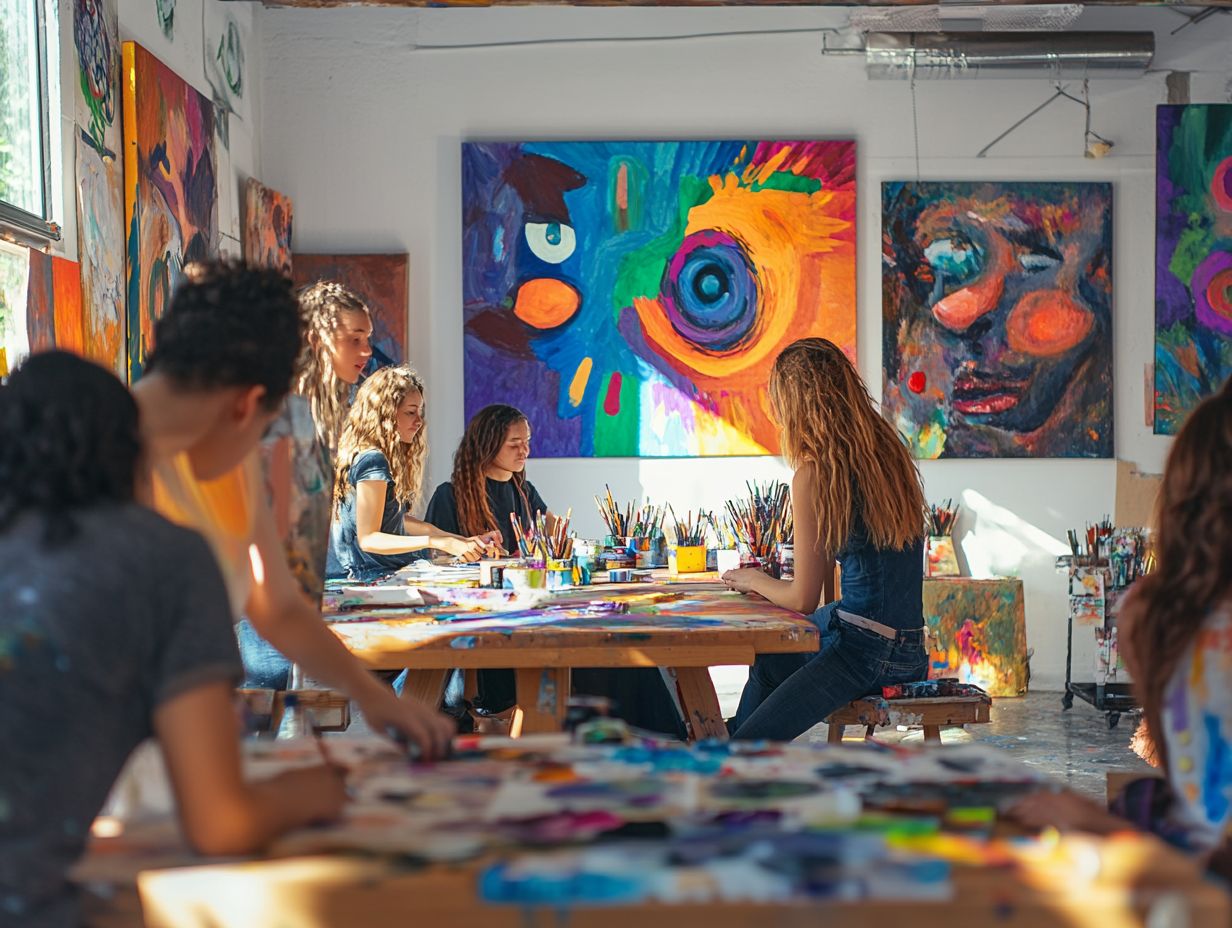
- Art allows us to explore and understand our emotions in a unique and powerful way.
- Emotional awareness is the ability to recognize and understand our own emotions, and it is essential for personal growth and well-being.
- Creating, viewing, and discussing art are all effective ways to promote emotional awareness and improve our overall emotional intelligence.
The Power of Art in Promoting Emotional Awareness
Artful Movement programs like those offered by the Institute for Art Integration and STEAM have demonstrated significant impacts on emotional awareness.
The transformative power of art transcends mere aesthetics. It serves as a profound medium for enhancing emotional awareness for both students and educators. Considering increasing mental health concerns, especially following the COVID-19 pandemic, institutions such as the Smithsonian American Art Museum and the National Museum of Asian Art are acknowledging the crucial role engaging with art plays in nurturing emotional intelligence.
Weaving art into educational frameworks allows you to develop empathy, self-awareness, and the ability to manage emotions. This creates supportive environments that promote personal growth through social-emotional learning and reflection.
What is Emotional Awareness?
Emotional awareness is your ability to recognize, understand, and manage not only your own emotions but also those of others around you. It s a vital element of emotional intelligence. This awareness includes self-reflection, allowing you to consider your feelings and reactions in various situations. This, in turn, sharpens your communication skills and enriches your interpersonal relationships, akin to the teachings of Stanford University s mindfulness programs.
However, this capacity is more than just recognizing emotions; it demands a nuanced understanding of the emotional landscape that shapes behavior and decision-making. By tapping into your feelings and identifying your triggers, you can navigate social interactions with greater efficacy, fostering empathy and connection.
The practice of reflection is essential in nurturing this awareness. It allows you to analyze your responses and thought patterns, offering clarity and insight. Over time, this reflective process can reveal profound insights about yourself and enhance your ability to understand others. Ultimately, this leads to more meaningful and effective exchanges in both your personal and professional life.
Why is Emotional Awareness Important?
Emotional awareness is essential for you, as it nurtures emotional intelligence, which can have profound implications for your mental health and personal growth. When you become attuned to your emotions, you can navigate life’s challenges more effectively, build empathy, and forge meaningful relationships elements that are critical in both personal and educational contexts.
This heightened state of self-reflection gives you the power to understand your own feelings. It also enhances your ability to recognize and empathize with the emotions of others. In educational settings, where students and teachers interact daily, increasing emotional awareness can significantly improve communication and collaboration.
By fostering an environment of understanding, educators create a safe space that encourages students to express themselves freely. Ultimately, this leads to better academic performance and personal development. This approach aligns with the methods advocated by RAND and the Brookings Institution. Cultivating emotional awareness is crucial for nurturing a supportive community where you and everyone else, including teachers, can truly thrive.
Don’t hesitate start exploring art today and unlock the door to deeper emotional understanding!
The Role of Art in Promoting Emotional Awareness
Art serves as a vital way for promoting emotional awareness, offering you a distinctive path for self-expression and deepening cultural understanding. By engaging with various artistic mediums, you can delve into and articulate your emotions, thereby enhancing your emotional intelligence as you encounter diverse perspectives and experiences.
This journey not only invites personal reflection but also nurtures empathy and connection among individuals. Integrating art into methods for teaching kids about emotions can significantly enrich the experience, creating a more profound sense of community.
How Does Art Help Us Understand Our Emotions?
Art is a powerful tool for you to understand your emotions, providing a means to express and reflect on your feelings in a tangible way. When you engage in artistic activities, you can explore your emotional landscape, facilitating emotional regulation and clarifying complex feelings that might otherwise be challenging to articulate.
Whether you choose painting, music, dance, or writing, each form of art offers a unique avenue for emotional exploration. For instance, creating a painting allows you to visually represent your internal struggles, revealing shades of anger or serenity that correspond to different experiences.
Similarly, writing poetry invites you to dive into introspection, enabling you to dissect your thoughts and feelings and craft verses that resonate with your innermost self. Listening to music often triggers memories or emotions, allowing you to connect deeply with feelings you might not have recognized otherwise. Practicing breathing exercises can also enhance this process.
Through these artistic expressions, you gain profound insights into your emotions, promoting both understanding and healing.
What Types of Art Can Be Used to Promote Emotional Awareness?
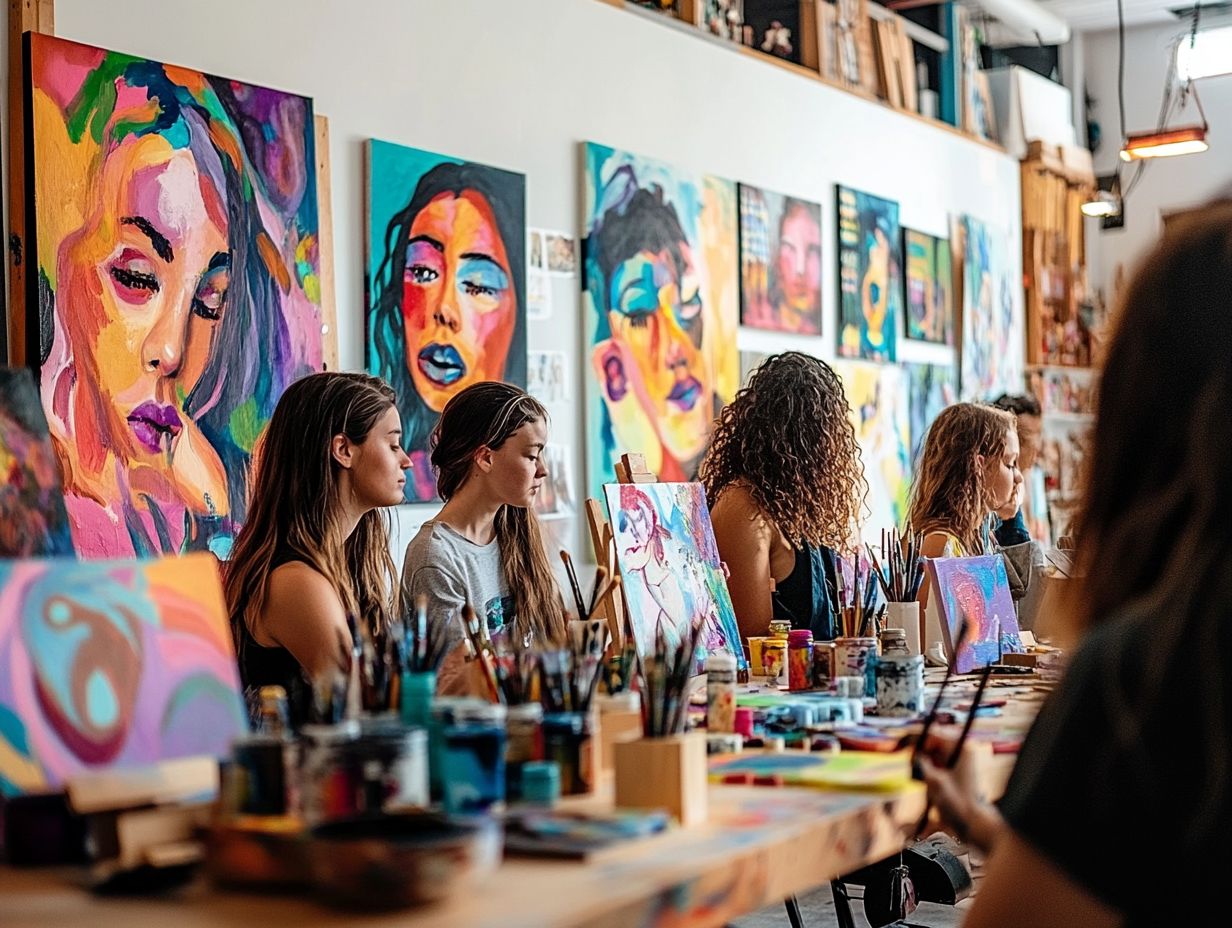
You can explore a rich variety of artistic mediums to enhance your emotional awareness, including visual arts, music, and performance art. Each of these forms empowers you to engage with your emotions creatively, whether through painting, sculpture, or collaborative art projects that promote mindfulness and shared experiences.
Take visual arts, for example; they offer you a canvas to vividly illustrate your feelings, transforming those intangible emotions into something tangible and visually impactful. On the other hand, music has the incredible ability to evoke deep emotional responses and foster a sense of community, allowing you to connect with others through rhythm and melody. Programs like those by the Fairmont and Stanford University enhance these experiences.
Another exciting avenue is performance art, which invites spontaneous expression and interaction, often uncovering hidden emotions that might otherwise remain concealed. Successful collaborative projects, like murals created by students and teachers working together, have proven to be instrumental in cultivating a sense of community and providing a platform for meaningful dialogue. Renowned contributions from institutions like the Smithsonian American Art Museum and the National Museum of Asian Art further exemplify this impact.
These endeavors enrich the educational environment and promote emotional growth, making your artistic journey all the more rewarding. Instructors from organizations like Create Calm and programs like Terra emphasize the importance of these integrative art practices.
Ways to Use Art for Emotional Awareness
Don’t miss the chance to use art to nurture your emotional awareness. Engaging with art can transform how you understand your feelings! Utilizing art to nurture emotional awareness can manifest in numerous ways, offering you the opportunity to engage both creatively and reflectively with your feelings.
By creating art, appreciating it, and engaging in discussions about it, you and your peers can develop a richer understanding of emotions. This process not only deepens emotional insight but also enhances your empathy and communication skills, fostering a more profound connection with yourself and others.
Start your artistic journey today and discover how it can transform your emotional understanding!
1. Creating Art
Creating art offers you a remarkable avenue for expressing your emotions. It serves as a therapeutic outlet that helps you express yourself and regulate your feelings. This process can be especially beneficial for students like you, encouraging mindfulness and introspection in a nurturing environment.
When artistic activities are woven into educational settings, they cultivate a profound sense of safety and belonging. This empowers you to explore your inner world without fear of judgment. Techniques such as guided drawing sessions led by professionals like Elizabeth Dale-Deines or Jennifer Reifsteck, art journaling, and collaborative murals can ignite your creative expression and enhance your emotional awareness.
By allowing you to experiment with various media such as painting, collage, or digital art educators can create a platform for open dialogue about your feelings. Discussing your artwork can deepen your understanding of personal emotions and nurture empathy towards others, ultimately fostering a richer, more compassionate classroom community.
2. Viewing Art
Viewing art can profoundly elevate your emotional awareness. It allows you to connect deeply with the feelings expressed by artists, such as those highlighted in exhibitions at the National Museum of Asian Art. This connection fosters empathy and cultural understanding.
Engaging with a variety of artworks encourages you to reflect on your emotions and experiences while appreciating the emotional narratives others convey. By immersing yourself in the rich tapestry of human expression found in visual, musical, or performance art, including notable collections at the Smithsonian American Art Museum and the National Museum of Asian Art, you can gain valuable insights into the lives and struggles of others.
This connection opens up a dialogue about shared human experiences, bridging divides and cultivating a profound sense of community. Integrating art appreciation into educational settings can be transformative. Incorporating art into the curriculum hones your analytical skills and sparks discussions around personal and societal issues.
Activities such as guided art discussions or collaborative art projects provide you with tools to express your emotions, enhancing your emotional intelligence and creating a more empathetic learning environment.
3. Discussing Art
Discussing art opens up rich avenues for dialogue about emotions. It allows you to articulate your feelings and reactions to various artworks, sharpening your communication skills and promoting reflection on your emotional experiences related to the themes presented in the art.
By engaging in thoughtful conversations about different pieces, you can uncover insights into how art elicits a range of emotional responses. For example, educators might ask, “What emotions does this piece evoke for you, and why?” or “How does the use of color influence your feelings about this artwork?” Activities like collaborative art critiques or reflections on personal connections to specific themes can enhance your expression and communication skills.
These dialogues improve your verbal skills while fostering a deeper understanding of your own emotional landscape. They bridge the gap between your personal experiences and the collective interpretations of art.
How Art Therapy Can Help with Emotional Awareness and Mental Health
Art therapy serves as a transformative therapeutic approach that harnesses the power of creative expression. It fosters emotional awareness and enhances your emotional intelligence while supporting your mental well-being. Notable practitioners like Elizabeth Dale-Deines and Jennifer Reifsteck have significantly contributed to this field.
By immersing yourself in the art-making process, you’re invited to delve into your feelings, promoting deeper self-awareness and aiding in emotional regulation.
Are you ready to explore how art can help you understand your emotions better? Engage with art today and see the difference it can make in your life!
What is Art Therapy?
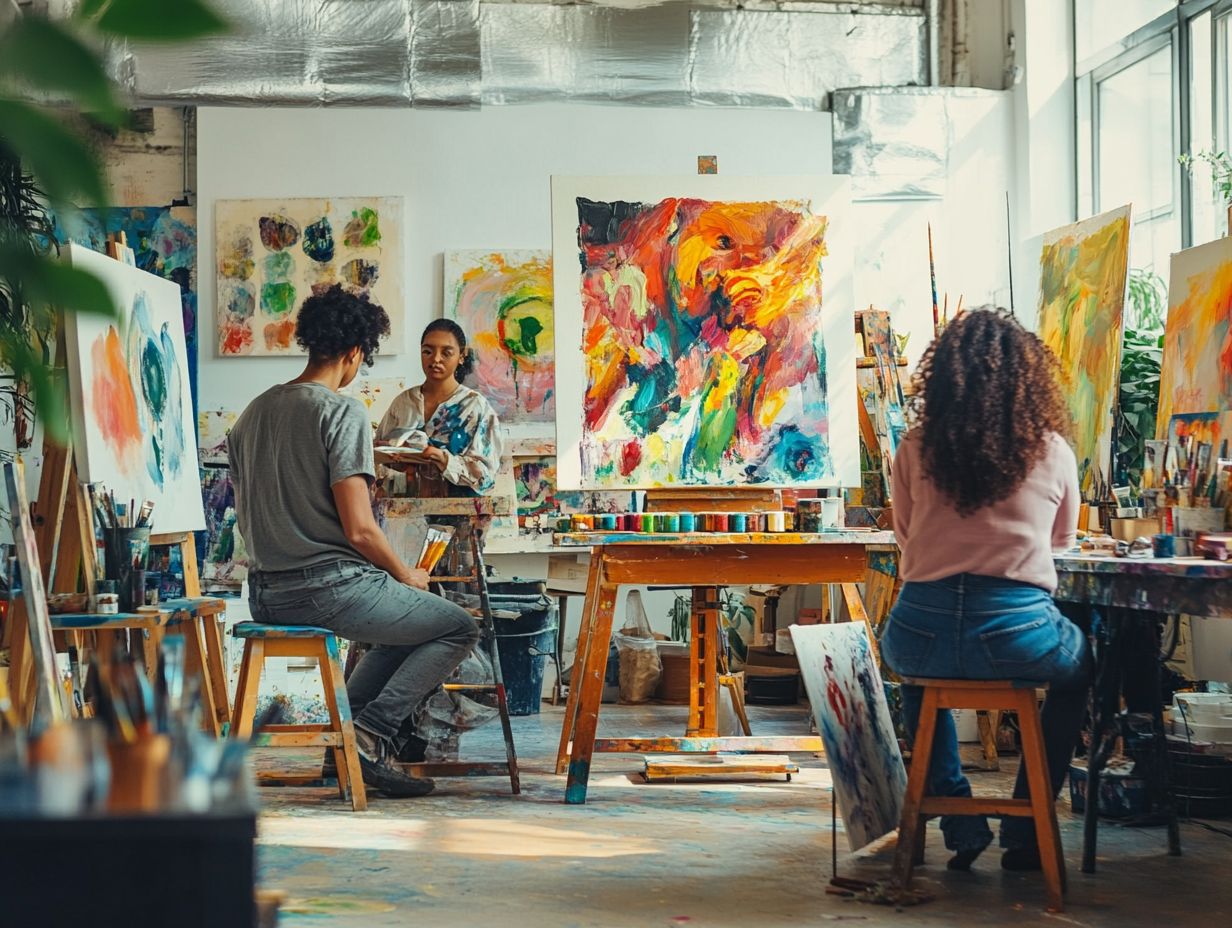
Art therapy is a therapeutic approach that masterfully intertwines artistic expression with psychology. It gives you the power to process emotions and experiences while enhancing your emotional awareness. This practice invites you to explore self-expression through various artistic mediums, creating a channel for you to communicate feelings that might be too complex to articulate.
Techniques from the Create Calm initiative can also be included to enhance mindfulness and emotional regulation. Rooted in the conviction that creativity serves as a potent instrument for healing, art therapy emerged in the mid-20th century, drawing inspiration from various psychological theories.
It embraces diverse methodologies painting, drawing, sculpture, and collage allowing you to engage in emotional exploration and fostering a profound understanding of your inner self. Influences from artists like Hokusai and research from institutions like Stanford University have further enriched the practice.
By leveraging creativity as a bridge to unearth hidden emotions, this therapeutic method not only assists you in self-reflection but also cultivates a non-judgmental space. Here, you can confront your feelings safely. Through this enlightening journey, you can develop a heightened emotional awareness that paves the way for personal growth and healing.
How Does Art Therapy Promote Emotional Awareness?
Discover how art therapy can transform your emotional awareness! Art therapy offers you a unique opportunity to cultivate emotional awareness by providing a safe haven for exploring your emotions through creative expression. This enriching process enhances your emotional intelligence and mental well-being, encouraging you to confront and articulate your feelings.
With various techniques at your disposal be it painting, drawing, or sculpting you can externalize your inner thoughts and feelings. This makes it much easier to examine and reflect upon them. For example, using color to represent different emotions allows you to create a visual tapestry of complex feelings, fostering deeper insights into your emotional landscape.
Guided imagery and storytelling during art therapy sessions help you navigate your experiences, illuminating the connections between your emotions and significant life events. Practices such as breathing exercises can also aid in managing stress and enhancing emotional regulation.
As you create, you may find yourself gaining a sense of mastery and control over your emotional world, ultimately paving the way for personal growth and resilience.
Incorporating Art into Daily Life for Emotional Awareness
Incorporating art into your daily life can profoundly elevate your emotional awareness. It provides continuous opportunities for self-expression and introspection.
Engaging in simple yet impactful practices, such as maintaining an art journal or attending art exhibitions, enables both students and teachers to connect with their emotions more deeply. Institutions like the Smithsonian and initiatives like Artful Movement offer numerous resources for such engagement.
This engagement fosters a richer understanding of themselves and the community around them. It enhances emotional intelligence and interpersonal relationships. Organizations like the Collaborative for Academic, Social, and Emotional Learning (CASEL) emphasize the importance of integrating such practices in educational settings.
Start incorporating art into your daily life today and feel the positive changes in your emotional awareness!
Enhancing Emotional Awareness Through Art
1. Keeping an Art Journal
Keeping an art journal can be a powerful tool for self-expression and emotional awareness. This practice allows you to document your thoughts and feelings creatively, encouraging mindfulness as you reflect on your emotional states and experiences through various artistic mediums.
Renowned initiatives like Artful Movement support such reflective practices. By engaging in this expressive form, you can delve into your innermost thoughts, unveiling layers of your psyche that might otherwise remain concealed. Techniques such as collage, painting, or even simple doodling serve as gateways to understanding your complex emotions.
Consider prompts like “What color represents my current mood?” or “Create a visual representation of a recent frustration”. These can spark deeper introspection. Regularly engaging with your art journal not only nurtures your creativity but also acts as a therapeutic tool. It helps you develop a richer emotional vocabulary and greater clarity in your feelings.
2. Attending Art Exhibitions
Attending art exhibitions offers a unique opportunity to immerse yourself in a world of diverse artworks. This enriching experience can evoke feelings and reflections, promoting empathy as you connect with the narratives woven into each piece on display.
Visit institutions like the Smithsonian American Art Museum (SAAM) and the National Museum of Asian Art (NMAA) for profound experiences. As you encounter artworks that share personal and often poignant stories, you gain a deeper insight into different perspectives and experiences, nurturing a sense of community and shared humanity.
Incorporating visits to these exhibitions into educational settings enhances the curriculum. It invites you to explore your own emotions and thoughts in response to what you observe. Research from the Brookings Institution and RAND underscores the educational benefits of integrating art into the curriculum.
This practice sparks critical thinking and fosters discussions around social issues. It enables you to reflect on your values and beliefs while cultivating a richer appreciation for the arts and the myriad expressions of human experience.
3. Using Art as a Tool for Reflection
Using art as a tool for reflection allows you to creatively process your emotions and experiences. This enhances your emotional awareness and understanding yourself.
Engaging with art through reflective practices leads to deeper insights into your feelings and reactions, promoting personal growth and mental health. For instance, creating a visual representation of a significant life event like a milestone in a relationship or a challenging moment helps you visualize your emotions in a tangible form.
This could take the shape of painting, drawing, or even collage-making, where colors and imagery reflect your unique emotional landscapes. Practitioners at the Institute for Art Integration and STEAM offer valuable resources to support such creative processes.
Journaling alongside your art-making expressing your thoughts and feelings about the artwork can further enrich your self-exploration. Participate in art therapy sessions or community art projects to nurture individual reflection and encourage a collective sharing of experiences. Initiatives like Terra and research by the Surgeon General emphasize the value of such communal engagements.
Ultimately, this process deepens emotional connections and understanding, making your journey all the more fulfilling.
Frequently Asked Questions
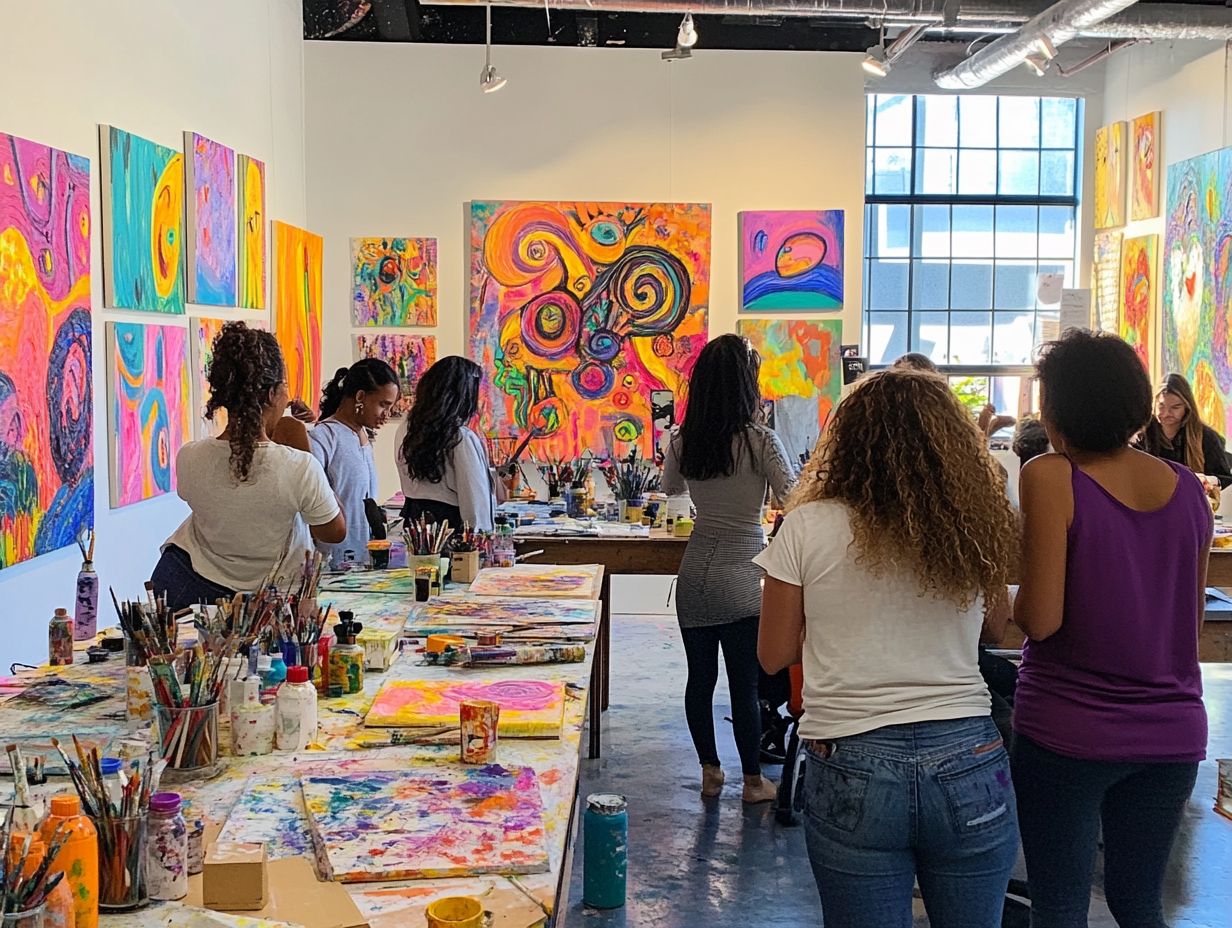
What is emotional awareness and how can art help in promoting it, especially during challenging times like COVID-19?
Emotional awareness refers to the ability to recognize and understand one’s own emotions and the emotions of others. Art can promote emotional awareness by providing a creative outlet to express and explore emotions, as well as increasing empathy and understanding through visual representations.
Art and Emotional Awareness
What types of art can be used to promote emotional awareness?
Any form of art can be used to promote emotional awareness, including visual arts such as painting and drawing, performing arts like dance and theater, and written forms like poetry and storytelling. The key is to find a medium that resonates with the individual.
Initiatives from the Collaborative for Academic, Social, and Emotional Learning (CASEL) provide frameworks to integrate these practices effectively.
Can anyone use art to promote emotional awareness, even if they are not artistically inclined? What role do teachers and students play in this?
Yes, anyone can use art to promote emotional awareness and social-emotional learning, regardless of their level of artistic talent. The focus is not on creating a masterpiece, but rather on using the process of creation as a means of exploring and expressing emotions.
What matters is the process of creation, not the final piece. This enhances emotional intelligence and fosters self-awareness.
How can art be incorporated into therapy or counseling to promote emotional understanding and emotional regulation?
Art therapy uses art-making for communication and self-expression. It can be utilized in individual or group therapy sessions to help individuals gain a better understanding of their emotions and improve communication skills.
Counselors may also use art-based activities to supplement traditional talk therapy methods, incorporating mindfulness being present and fully engaged in the moment to deepen the emotional experience in art therapy.
Are there any specific techniques or approaches to using art for promoting emotional understanding and personal growth?
While there is no one-size-fits-all approach, some techniques and approaches include free-form art-making, guided imagery, collaborative art projects, and mindfulness-based art activities. The key is to find what works best for the individual.
These strategies allow individuals to connect with and explore their emotions in a safe and supportive environment, promoting empathy and cultural understanding.
Can art be used to promote emotional awareness and mental health in children?
Yes, art is a powerful tool that can ignite emotional awareness in children. Through art, children can learn to identify and express their emotions, develop empathy and understanding for others, and build skills for managing and regulating emotions.
Teachers and students can engage in play-based art therapy techniques and collaborative art projects to help children explore and process difficult emotions in a developmentally appropriate way.
These activities can also enhance social-emotional learning and personal growth. Engaging children in creative expression today can pave the way for their emotional resilience tomorrow!

